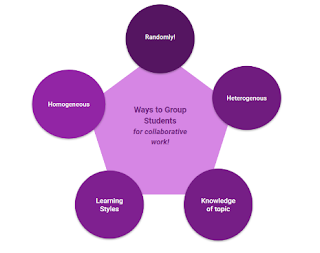Student Collaboration: Making Cooperative Learning a Success! (part 1 of 4)
Looking for ways to get kids working together in your classroom? Being able to collaborate effectively with others is an important skill for Future-ready Students. Group work can be complex and frustrating, but it can also become a game-changer for student engagement and differentiation!
On her podcast “Cult of Pedagogy,” Jennifer Gonzalez identifies four areas where teachers may struggle when implementing collaborative learning in their classrooms, and addresses ways in which teachers can think ahead and plan for those instances so small group/collaborative work can be successful. Those four areas are:
Interpersonal conflicts interfere with productivity,
Student contributions are uneven,
Off-task behavior wastes time, and
Student absences can throw everything off.
Let’s begin with “interpersonal conflicts interfere with productivity.” Before setting out on your collaborative learning (teaching) adventure, think about how you will group your students.
Group Students Randomly! After you have established your norms for small group work in the classroom, and after students have had the opportunity to build relationships with one another as classmates, you may consider random grouping for short-term collaborative learning experiences. Here is a tool where you can enter all student names and it will randomly group them for you: PickerWheel
Heterogeneous Groups Sometimes it can be helpful to have different ability levels in a group together. When introduced intentionally, this strategy can help “high” kids work on their leadership skills, and can encourage peer-to-peer learning.
Homogeneous Groups By grouping students who are all around the same ability level, the workload may be more evenly divided. With homogeneous groups, students may be pushed from where they are because there is no one in the group to “do all the work for them.”
Knowledge of Topic This grouping strategy can work just like the Heterogeneous and Homogeneous strategies! Instead of focusing on a students’ ability, however, look at where they are as a learner in their understanding of the topic. For example, a history teacher may look at how well students are grasping content about the Spanish-American War and group based on that information, rather than the reading ability of any particular student.
Learning Styles Grouping students based on learning styles can get the creative juices flowing in your classroom! Put artistic students with other artistic students (et cetera…) and see what they produce together!
Check back next month for a blog post helping you consider supporting groups so contributions are even across all members!
References & Resources:
"Cult of Pedagogy" Blog/Podcast by Jennifer Gonzalez
"Student Learning Groups: Homogeneous or Heterogeneous?" on Edutopia
"Different Ways to Group Students" by Tammy DeShaw


Comments
Post a Comment